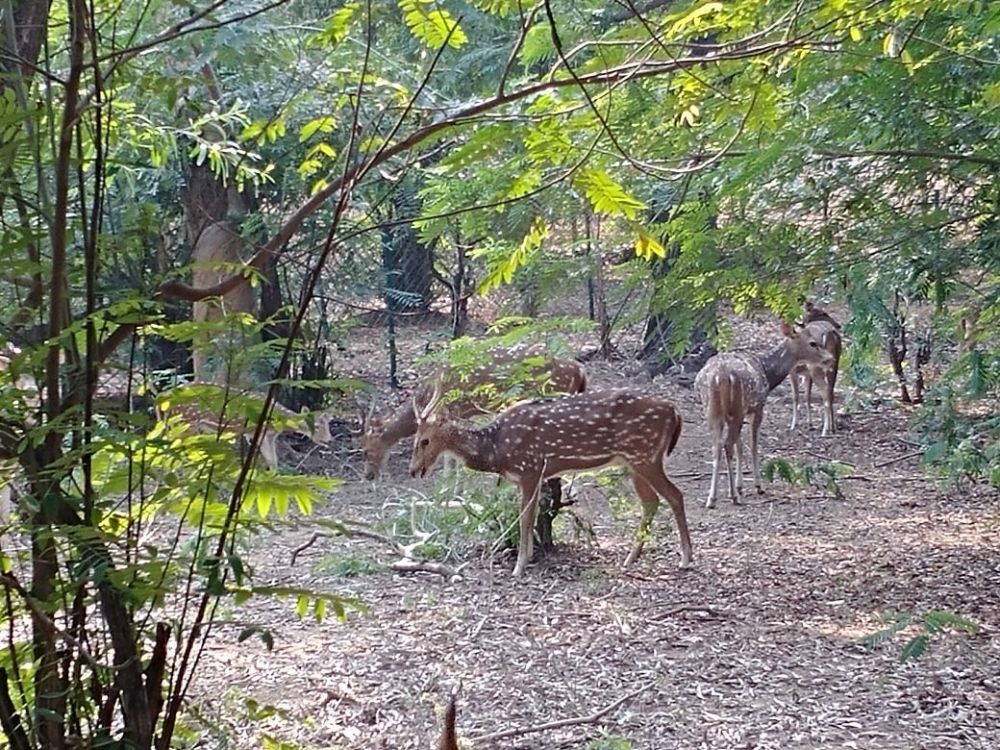

Located in the birbhum district of West Bengal, the Ballavpur Wildlife Sanctuary is a verdant patch of forest in Shantiniketan. Founded by the famous Nobel laureate Rabindranath Tagore, Shantiniketan is primarily known for its association with his vision and the Visva-Bharati University. However, the Ballavpur Wildlife Sanctuary has its own place in the hearts of nature and wildlife enthusiasts.
The sanctuary, established in the year 1977, covers an area of about 200 hectares and originally formed part of the Deer Park. Over the years, the sanctuary has gained prominence among both local and international tourists for its rich biodiversity and serene environment. Initially, the area was more frequently visited by students and researchers from Visva-Bharati University, due to its proximity. But as Shantiniketan itself attracted more visitors for its cultural and educational heritage, the sanctuary began to attract a wider audience seeking a tryst with nature.
The allure of the sanctuary lies not just in its wildlife, which includes species such as the blackbuck, spotted deer, and various types of birds, but also in its effort to preserve the natural environment in a region dominated by human settlements and agriculture. The efforts to maintain the sanctuary have been a draw for ecotourists and those interested in conservation.
In recent years, sustainable and ecotourism have become trending concepts in the tourism industry, and Ballavpur Wildlife Sanctuary has seen a surge in tourists looking for environmentally responsible ways to experience nature. With environmental consciousness on the rise, more visitors are interested in guided wildlife tours, bird watching, photography tours, and learning about the varied flora of the region. These trends have led to an increase in local engagement and the development of better facilities for tourists without compromising the sanctuary's ecological balance. The homestay culture of Shantiniketan has also influenced tourism in and around the sanctuary. Visitors prefer to stay in homestays that offer a more personal and immersive experience of the local culture. This preference has encouraged the locals to maintain and promote their customs and traditions, contributing to the cultural tourism that Shantiniketan is famous for.
Additionally, with the global trend of wellness tourism, more tourists are combining their visits to the sanctuary with experiences that focus on health and well-being. This includes partaking in yoga sessions, meditation, and enjoying organic, locally-sourced food – all of which Shantiniketan, as a hub of culture and peace, is well-equipped to provide.
Digital Influence: The internet and social media have also played pivotal roles in promoting the sanctuary. Stunning photographs and reviews shared online have brought increased visibility and interest from tourists seeking off-the-beaten-path travel experiences.
To conclude, the tourism history of Ballavpur Wildlife Sanctuary is relatively young compared to the ancient roots of Shantiniketan, but it stands as a testament to the region's growing commitment to conserving its natural landscapes amidst cultural growth. With shifts towards sustainable tourism, the sanctuary promises to be a natural haven for years to come, inviting travelers to explore the beauty and tranquility of West Bengal.